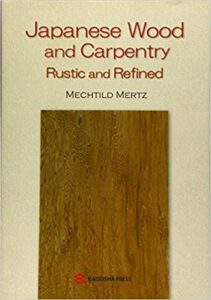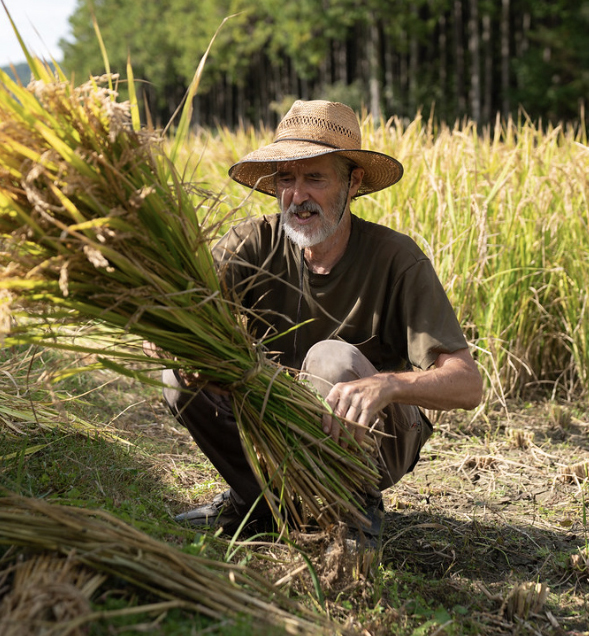Japanese Wood and Carpentry – Rustic and Refined –
By Mechtild Mertz
A book review by Judith Clancy
___________________________

Japan is a country whose primary building material is wood, ranging from delicate alcove posts to some of the largest wooden structures in the world all employing exquisitely selected wood species.
Walking the old streets of Kyoto or entering a temple reveals the legacy of Japan’s forests: the soothing symmetry of wood lattice-fronted homes, temples with lustrous pillars and wide planked flooring glowing with centuries of use.
Wood is the chosen medium for structures, ornamentation and religious images in a country that supports its craftsmen and appreciates the inherent sensuousness of wood, its color variation, grain, and sustainability.
Mertz’s book is a slim volume with an immense amount of information, full of color photographs that identify the characteristics of each wood type. It also includes photos of fourteenth century woodblock prints that show tools that carpenters used to wield their ancient craft with references known even centuries earlier. Japanese Wood and Carpentry contains an impressive amount of information regarding the grain rendered by cutting direction and the four designated roles of carpenters that judge the aesthetic, ecological and economics that determine wood selection. Mertz also has delved into the timber species presented at the Vienna World Exhibition held in 1873 that listed 133 wood species, and then in a catalog, edited by the Meiji government, listing Japan’s one hundred most important timber tree species for the World exhibitions of Philadelphia in 1876, and of Paris in 1878.
Capably edited by John Hart Benson Jr., the clearly written text makes its well-researched subject a pleasure to read and accessible to laypersons and specialists alike.
________________________
As an ethnobotanist and researcher specializing in Asian wooden sculpture and author of Wood and Traditional Woodworking in Japan, Mertz draws upon her great knowledge of Japanese culture and society to explain terms, history, and sources of timber, domestic and abroad. She is presently a researcher at the East Asian Civilizations Research Centre of the National Centre for Scientific Research in Paris.
The book is published by Kaiseisha Press and is available on amazon.jp here. For her other book, see this page.
*************************
(Note by JD: ‘The author has close ties with Kyoto, having carried out research on traditional Japanese woodworking at Kyoto University’s Wood Research Institute for two years. She also did post-doctorate research at the Kyoto University Research Institute for Sustainable Humanosphere. She has participated in cooperative study programs on Japanese and Chinese Buddhist sculpture, Tibetan temples and archeological wooden remains. One of her projects investigated the remains of Kublai Khan’s sunken fleet.’
See this link for more.)







Recent Comments